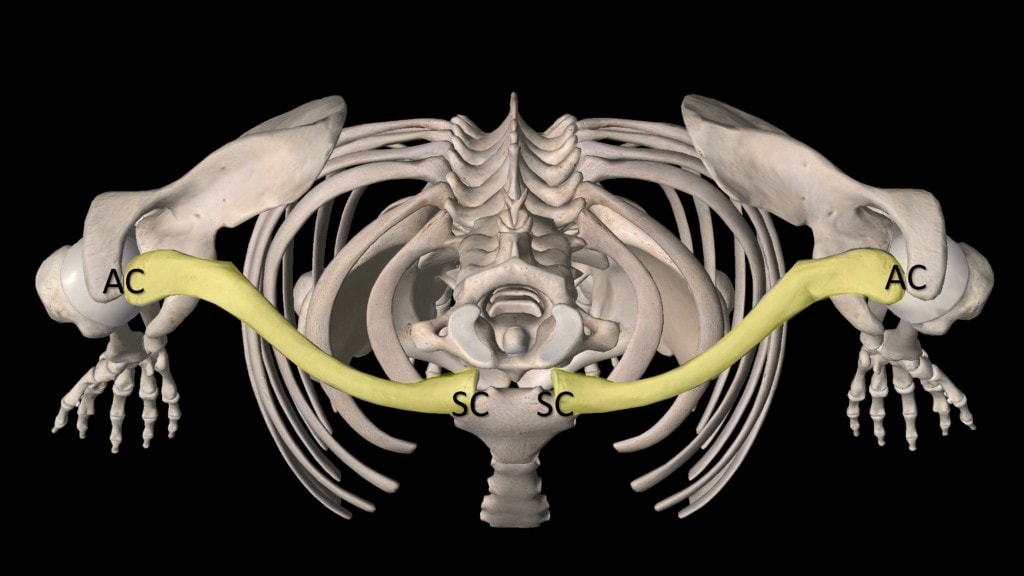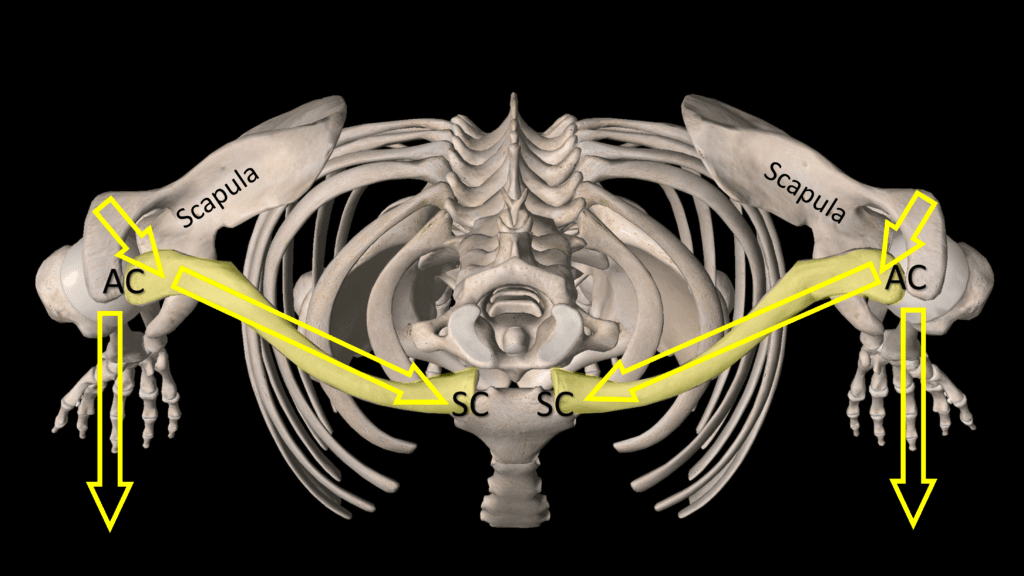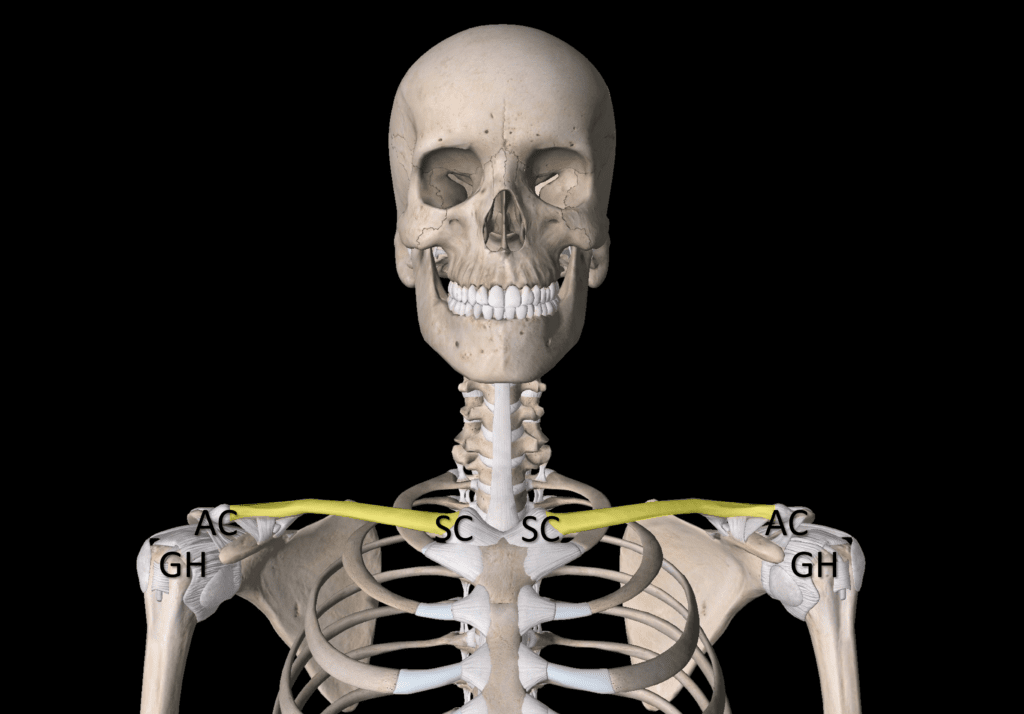The Critical Upper Body Suspension System
What connects your arms to your body? While that may sound like a crazy question that you really don’t need to know the answer to at this point, it’s actually a bigger deal than you might realize. Why? because like your car, the “suspension” system for your upper body can get misaligned or damaged and that can wreak havoc with your neck, shoulder, or chest. So let’s dig into this system and why it’s critical to a normal functioning upper body.
Car Suspensions

You may not think about the fact that your car has an entire system designed to take shocks from the road and transfer those safely to the frame. Basically, there’s a control arm that transfers the force from the wheel to the body. Then there’s a sophisticated system that uses springs or shocks to absorb that force.
What happens if the ball joint between the wheel and control arm goes out? Your car is useless. The same thing happens if you blow a spring or shock, your car can’t be driven as every time you go over a bump it sounds like the car will be shaken to pieces.
Your body really has the same exact system. However, unlike the car example, problems at the places where the forces transfer are common and often go unidentified for ages until the system begins to break down with chronic shoulder, neck, or chest pain. Let’s dig in.
Your Upper Body Suspension System
I
Above you see your spine, chest, and arms from above. I’ve removed the skull and a few other things so you can visualize the suspension system. Notice that the collar bone (clavicle) here is highlighted yellow. At either end of the collar bone are joints. Between the clavicle and the chest is the SC joint and between it and the shoulder blade (scapula) is the AC joint.

Above, I have shown a forward pushing force with your arms. The humerus arm bone is attached to your shoulder blade (scapula) by strong ligaments. That force, therefore, is transferred to the scapula which meets the clavicle at the AC joint. Muscles around the chest wall including the pecs (pectoralis major and minor), rotator cuff, and other chest wall muscles make sure that this force gets transferred to the clavicle which anchors at the top of your breast bone (sternum). These muscles also act as active shock absorbers.

Now note above where these three critical force transfer joints are located from the front view. The GH is Glenohumeral which is the main shoulder joint. The AC (Acromioclavicular) is between the acromion process of the scapula and the clavicle. The SC (Sternoclavicular) is between the sternum (breastbone) and the clavicle.
Problems in the Upper Body Suspension System are Common, But Also Commonly Missed
Each of these three joints (GH, AC, and SC) are surrounded by thick and strong ligaments. However, any of these three can be injured and have its ligaments irreversibly stretched. When that happens, the ligaments and joints are chronically lax.
That laxity in one or more joints that make up the upper body suspension system does two things. First, that specific joint can become arthritic as it’s moving around too much and beating up the joint surfaces. Second, the ability of the system to move forces to the right places of your body is thrown off. Hence, that force can get transferred to the neck, the shoulder, or the chest in a way that overloads that area leading to muscle spasms and pain. For example, I’ve seen countless neck pain patients where part of the issue was laxity at the AC joint ligaments that all other providers had missed.
The problem is not that these problems can be easily detected, but that they suffer from a ‘WNL” problem. WNL in medicine means “Within Normal Limits”. In a tongue-in-cheek way, it also means, “We Never Looked”. Meaning all too often the physician performing a cursory few-minute physical exam has never been trained how to look for subtle instability at each of these joints.
For example, if you’re relying on the average orthopedic surgeon to find this problem, good luck. They will understand how to identify the rare and easy-to-find complete dislocation of any of these joints. However, mere laxity in that joint that is wreaking havoc with the whole upper body or neck will be completely invisible because the surgeon was never taught how to perform this exam.
What Does A Proper Upper Body Suspension System Exam Look Like?
The doctor or provider should take their fingers and firmly grasp each joint and move it back and forth, looking for side to side or absolute laxity. So for example, for the AC joint, that means grabbing the clavicle on either end and moving it back and forth or up and down. The provider is looking for subtle “joint play” and not huge movements. That’s done with all six joints (three on each side).
Who will likely perform this detailed exam? You are usually SOL with orthopedic surgeons, neurologists, neurosurgeons, family physicians, and “sports medicine” docs. You’re better off with manual physical therapists, osteopaths who specialize in manual medicine (few and far between), and those physicians like our Regenexx network doctors who have dedicated their careers to understanding how to diagnose and treat the entire musculoskeletal system as a whole.
If There’s a Problem in My Upper Body Suspension System, What Can Be Done?
If the ligaments at any joint are damaged, in my clinical experience, interventional orthobiologics can help. That means the precise injection of things like PRP (platelet-rich plasma) into those ligaments using ultrasound guidance. While some providers may understand how to treat the GH and AC ligaments, the SC ligaments are often a “red-headed stepchild”. Meaning that most providers ignore this joint altogether on exam or even in the differential diagnosis. To learn more about the often ignored SC joint, see my blog at this link.
The upshot? The suspension system for your upper body is a big deal. It’s what safely transfers forces from your arms to your core. If that system has any joint with loose ligaments, that can cause all sorts of havoc in your neck, shoulders, or chest wall. So please get this checked out of you have any of these issues, as until they are addressed, there is no way to fix your problem.

NOTE: This blog post provides general information to help the reader better understand regenerative medicine, musculoskeletal health, and related subjects. All content provided in this blog, website, or any linked materials, including text, graphics, images, patient profiles, outcomes, and information, are not intended and should not be considered or used as a substitute for medical advice, diagnosis, or treatment. Please always consult with a professional and certified healthcare provider to discuss if a treatment is right for you.
